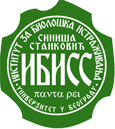The ability to sense and appropriately respond to changes in their environment contributes to the survival of living organisms. Interestingly, in a few instances this capacity was shown to be modulated or gated by the circadian clock. Phototropism (PT) is classic photobiological response that has attracted the attention of scientists for centuries. It enables plants growing in low light environments to tune the position of their photosynthetic organs and thus optimize photosynthesis. Although most initial studies were conducted in etiolated grass (monocotyledonous) seedlings, most recent work was performed in Arabidopsis thaliana. This lead to the identification of the phototropic photoreceptors (phot1 and phot2 in Arabidopsis), a photoreceptor family that is present in all plants. Moreover, a number of important steps leading from light perception to initiation of asymmetric growth in the photostimulated organ have been identified. A key event leading to tropic growth is the establishment of an auxin gradient. In addition, other hormones may also contribute to this response. Despite its clear advantages for conducting molecular genetic research Arabidopsis is not always the most convenient model. Moreover, recent studies have shown that studying phototropism in multiple species may help in defining conserved elements of the pathway. Recent work from the Vinterhalter group indicates that in potato plantlets phototropic responsiveness is gated by the circadian clock. Circadian modulation of phototropism in potato may be related to leaf movements tracking the sun during the day, while at night the leaves return to the “morning position” anticipating dawn. Based on this exciting novel finding we propose the following research aims: 1. Is circadian-regulated PT in potato correlated with rhythmic expression of the photoreceptor? 2. Is circadian-regulated PT in potato correlated with rhythmic levels of growth hormones? 3. Is circadian-regulated PT in potato modulated by sugar availability? 4. Do phytochromes modulate PT in potato? 5. Developmental modulation of the phototropic response in Arabidopsis. 6. Is PT in Arabidopsis regulated by the circadian clock? With this proposal we want to address the molecular mechanisms underlying clock controlled growth towards the light by using simple and complementary models (potato and Arabidopsis seedlings). Moreover the collaboration between the Vinterhalter and Fankhauser lab will contribute to an important technology transfer to the Department of Plant Physiology in Belgrade (Serbia) that will result both in upgraded facilities and training of the next generation of plant physiologists.
Financier: SNFS, Switzerland
Partner: Center for integrative genomics, Univerzitet u Lausanne, Switzerland
Period: 2014-2016
Coordinator: Dr. Dragan Vinterhalter
Collaborators from IBISS:




